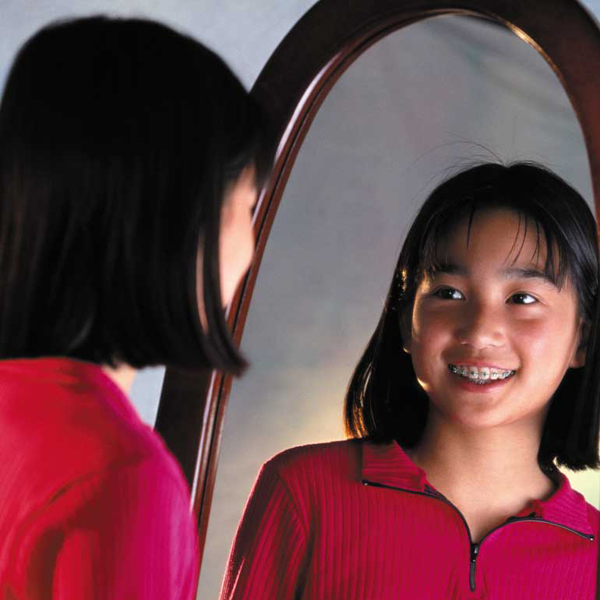My 11-year-old daughter is an inveterate bra-shopper. Go near a mall, and she’ll start searching for the right brassiere to hold her developing bosom. Not that she wears the bras we buy. “Someone might see the straps under my shirt,” Lily explains. For now, the bras remain tucked in a drawer, waiting for the day she feels safe enough to wear them.
I’m willing to pay for these purchases because I remember my own puberty and the confusion I felt at the transformation of my body. Like I did, Lily struggles with being both proud and embarrassed by her emerging figure. And like I did, she looks at her mother’s body and compares: Mommy, will my breasts be like yours? How old were you when you started wearing a bra?
But here’s the difference. Watching my mother, I had a pretty good idea of what I’d look like as an adult. Being adopted, my daughter can find few clues to her own physical future in me.
This is a concern for all adoptive parents, as they see their children struggling with body image. From their earliest moments of puberty, adoptees wonder whom they are like as developing adults, writes psychiatrist Elinor B. Rosenberg in her book, The Adoption Life Cycle. Children who have photographs of birth parents, or actually have met them, are at an advantage here. These are real people a child can compare himself to. The child who has little information — who knows only that her mother was petite, or her father was heavyset, or who knows nothing at all — will inevitably wonder.
How can parents help? Talking about puberty is a good start. Lily and I have talked about how my body is different from hers. We discuss what she might expect, what her biological mother might look like, and how she compares to the rest of the girls in her class. Though I can provide few answers, she seems truly appreciative of my joining in her musings.
Being resourceful, Lily has also looked elsewhere for clues. During a recent trip to New York City, she carefully studied all the Asian women on the street. “Mom, see that woman?” Lily whispered to me. “I think I’m going to look like her someday.” Or: “I think I’ll be taller than that girl when I’m grown.” Lily’s comments remind me how important it is that transracially adopted children have older role models of the same ethnic background. We are lucky to have quite a few Asian friends. But just as important, I think, are more incidental role models. Last winter, we drove to Boston to attend the Wellesley College Asian Students Cultural Festival. My daughter could have cared less about making origami animals or fashioning Chinese lanterns. What Lily wanted was to watch the girls — to see how they dressed, laughed, and talked. And to see how big their breasts were.
In this period of identity formation, the adopted adolescent will inevitably struggle with the Who am I? question. Parents cannot alleviate all their sadness or confusion. But we can certainly acknowledge their task and help in small, but important ways.



